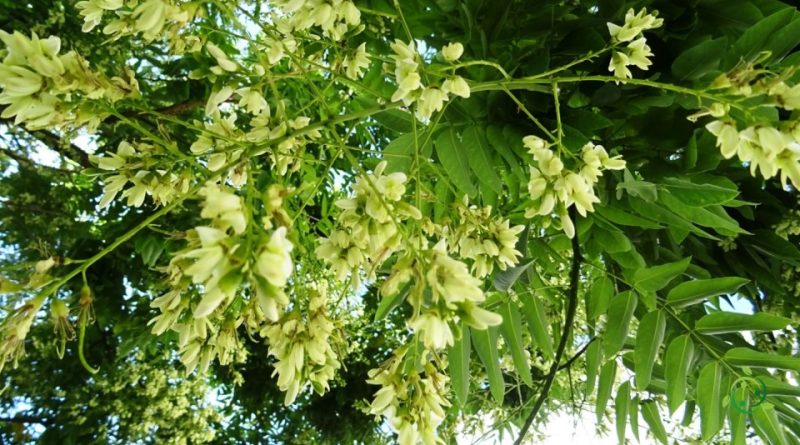Reproduction of the Japanese pagoda tree
Reproduction of the Japanese pagoda tree
The Japanese pagoda tree or Chinese scholar tree (Styphnolobium japonicum (L.) Schott) is a tree of the Fabaceae family native to central Asian regions.
Suitable breeding habitat –
Styphnolobium japonicum is a tree native to China, where it is autochthonous and also present in Japan and Korea; it was later introduced to Europe in the 18th century. It has been used as an ornamental plant due to its fine foliage, the beauty of the flowering and the elegance of its habit.
It is a popular ornamental tree in Europe, North America and South Africa, grown for its white flowers, born in late summer after most other flowering trees have long since finished flowering.
Its native habitat is open fields or wooded areas and along forest edges, usually in montane and foothill terrain, where it grows at elevations of 300 to 1,000 meters in western China.
Propagation –
Styphnolobium japonicum is a plant that grows up to 10-20 m in height.
This plant prefers well-drained, fertile soils, although it can tolerate a wide range of soil types, from sandy to loamy. It is a pollution resistant tree and can thrive in urban areas, making it a popular choice for planting along parks and boulevards in urban areas.
It is prized for its dark green leaves and profuse flowering of clusters of fragrant white flowers in summer. It also produces dark brown pods that contain seeds that can be toxic when eaten in large quantities.
Styphnolobium japonicum is very cold hardy, mature plants tolerate temperatures down to around -25° when fully dormant.
Trees take 30 years to flower from seed.
Propagation can be by seed or cuttings.
In that by seed this must be sown as soon as it is ripe in a protected seedbed.
It is advisable to immerse the seeds stored for 12 hours in hot (not boiling) water and sow at the end of winter in a protected area.
The young seedlings, as soon as they have reached the size of the palm of a hand, are to be placed in individual pots and cultivated for 2 years in protected conditions.
The transplant in the open field must be done at the beginning of the summer of their third year.
It can also be propagated through cuttings of young shoots in the mid-summer period in a shaded and humidified area.
Ecology –
Styphnolobium japonicum, formerly known as Sophora japonica, is a plant commonly found in urban habitats, parks, gardens and along roadsides. It is well adapted to growing in a variety of soil conditions and can tolerate various moisture and pH levels.
It is a deciduous tree which means that it loses its leaves during the winter season. Its leaves are composed of numerous small oval-shaped leaflets, creating a dense, leafy appearance.
The tree flowers in spring with showy white and fragrant panicle-shaped inflorescences. These flowers are an important food source for bees and other pollinating insects.
After flowering, Styphnolobium japonicum produces green, pod-shaped fruits that ripen in autumn. These pods contain seeds that can be spread by animals or wind to help dispersal the species.
It is a species highly valued for its ornamental beauty, but it also plays an important ecological role. Its blooms attract pollinating insects, thus contributing to local biodiversity. Additionally, its pods provide food for birds and other wildlife.
The plant is known for its tolerance to air pollution, making it a popular choice for planting in urban settings, where air pollution is often a concern.
In some regions Styphnolobium japonicum can be considered an invasive species. Its rapid growth and ability to form dense thickets can displace native species and reduce local biodiversity.

